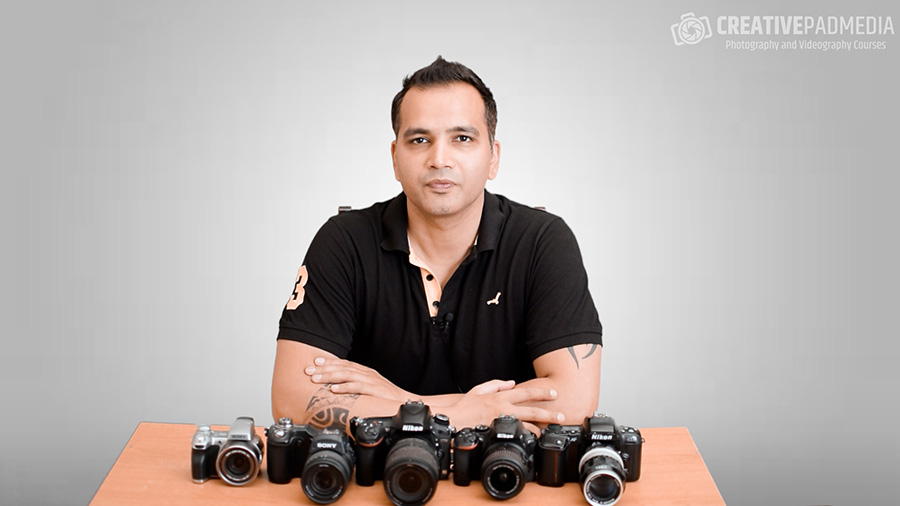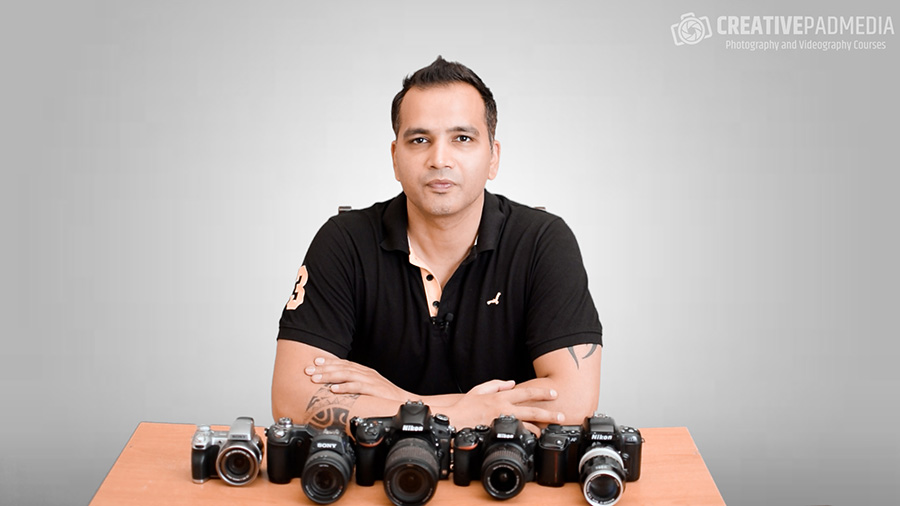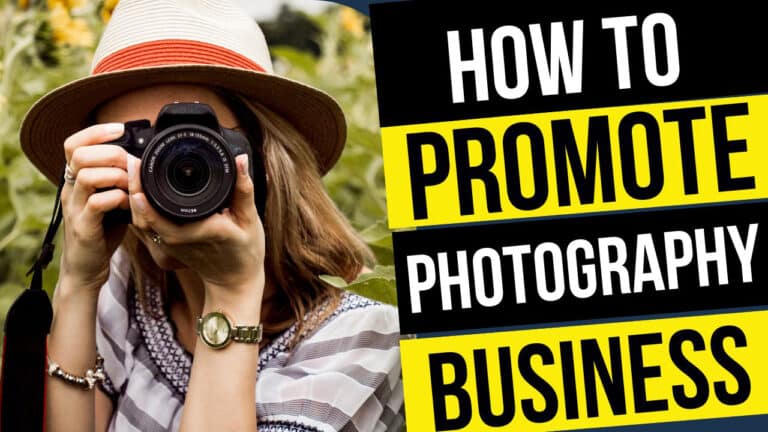How to Teach Photography Online – Top 6 Methods
Are you a photographer who wants to become a photography teacher? Then you’ve come to the right place.
When it comes to earning money from photography, teaching photography is an avenue which is often overlooked by a lot of photographers, simply because they don’t associate teaching as a service directly related to photography.
But the truth couldn’t be farther.
Not only can your photography work make you a top photography teacher, it can actually be more lucrative than doing photography itself, simply because, in most cases, teaching presents a more scalable business model than providing photography services.
I’m Kush Sharma, the founder here are Creative Pad Media. I have been teaching photography since 2013 via a lot of different mediums. I currently have over 55,000 students from over 170 countries.

And in this article, I will talk about some of the most effective ways to teach photography online.
Let’s have a look at how you can approach this using six different methods:
1. Creating Recorded Online Courses and Selling it on Udemy
Here at Creative Pad Media, this is the approach we follow. Recording videos, packaging them according to a certain curriculum and then hosting the online course using a course marketplace like Udemy, where prospective students can buy the course.
If you are interested in how this process works, then you can check out my course called Create and Launch Your First Online Course in 5 Weeks , which teaches you this entire process in a structured way.
This business model is the most scalable, because once you have created the course, it doesn’t consume any of your time to deliver it. You could be sleeping and your students will still be able purchase, access and finish the course. Secondly, unlike an in-person class, you are not limited by geography as you can sell you courses anywhere in the world.
The advantage of using Udemy is that you directly get access to a large number of prospective students, since Udemy is already a very popular marketplace. Udemy also often promotes your courses, so that takes away the a portion of the burden of marketing your courses yourself.
Of course, the downside of Udemy is that you have to part with a bit of a cut which Udemy will take. Secondly, most of the sales that happen on Udemy are not at the list price of the course (the price set by you). Sales usually happen when Udemy runs promotions, where the courses are discounted usually by more than 80%.
So you need to a lot of sales to make a worthwhile income. The key to doing that is to make good quality courses which will get good reviews, and to consistently create new courses, so you can have a large catalog of courses, just like we have here at Creative Pad Media.
But if this approach doesn’t sound like a right fit for you, then you can also host your courses on other platforms. Let’s discuss this in the next point.
2. Creating Recorded Online Courses and Selling it on Learning Management Platforms
In the previous point we saw that the downside of Udemy is that you don’t have a lot of control over your course, mainly the pricing point at which it is sold.
The alternative is that you avoid a marketplace like Udemy and instead host your courses using a LMS (Learning Management System) company, like Teachable or Thinkific or Kajabi.
There platforms are only similar to Udemy in the sense that they allow you to host the videos of your online course, but they are different because once you have uploaded your course, they don’t do anything else for you. No marketing, no promotions, nothing!
You’re basically on your own.
You have to market your courses on your own with the upside being that you get to choose the selling price.
So this is great for people who would like to sell their courses at a higher pricing point but are willing to rely on their own marketing efforts.
3. Teaching Online via One-on-One Sessions
While pre-recorded online courses can present a great way to scale your business, they often lack the personal touch that your students may need, especially in a field like photography, where even a minor doubt regarding a camera setting, can result in a lot of of confusion for a compete beginner.
This is where personal one-on-one sessions can be useful. Even though they do require your presence and are therefore not as scalable as recorded courses, they usually result in more satisfied and happier students, since you can clarify all their doubts within the session itself.
In case you choose this route, your options will be similar to what we saw with earlier point about creating recorded online courses, i.e, you can either leverage an existing marketplace platform, or do things on your own. Let’s discuss both these options in brief.
If you want to use an existing marketplace, then there’s no better option than Fiverr. Fiverr is the most popular website for freelancers. As a freelancer teacher on Fiverr, you can get in front of a lot of prospective students who are looking to learn photography via a Zoom or Skype call.
You also get a lot of flexibility in terms of pricing because you can price your service according to different tiers. For instance, in case of one on one coaching, you can charge higher for sessions of longer duration.
4. Starting a Photography Education YouTube Channel
A lot of social media platforms have come and gone in the last few years, but YouTube only seems to grow more and more in popularity.
And this is an amazing outlet for photography teachers because photography is a skill which is best taught via a visual medium like videos, as opposed to text.
However, this approach would mean you’re willing to give out your knowledge for free. And you will take on the risk of passing the various thresholds that YouTube requires you to cross, before your channel can become eligible for monetization. Currently there are two main requirements before a channel becomes eligible for monetization:
- At least 1000 subscribers
- At least 4000 watch hours in 365 days
There are other requirements too but these two are the ones that can take effort and time to achieve, especially the requirement of 4000 watch hours.
But if you do manage it, you can start earning via YouTube based on the number of views your video gets.
5. Creating Amazon Kindle E-books
In the last point, I mentioned that videos represent the best medium to teach photography. But this doesn’t mean they are the only medium.
In fact when I learned photography myself, I bought two books – a real book and an Amazon kindle. These two books were enough for me to learn the basics of photography.
Even though videos are more appealing and engaging, one advantage that text has over video is that a reader can skim through the content quickly and slow down on parts which the reader feels are important. This is tough to achieve when watching a video.
You only have to go to Amazon and type in “Photography for Beginners” in the Kindle e-book section to see the plethora of photography content out there.
Since Amazon already has a built-in audience for people who love books, publishing it there as a Kindle e-book is your best bet to get in front of a budding photography enthusiasts.
At the time of writing this article, I currently have two Kindle e-books on Amazon:
However, if you do decide to follow this approach, it would be best to club it together with one of the strategies discussed before, since the income from Kindle e-books can be very less in the beginning.
Talking about clubbing things together, let’s talk about the last strategy.
6. Combining All the Methods to Form an Online Photography Academy
This is exactly the approach we follow here at Creative Pad Media. We don’t just restrict ourselves to one method. When you combine all the methods, you start to become a professional brand.
We create and sell online courses but we also have a YouTube channel where we give out free content.
On the writing side of things, we have a blog that is updated regularly, and we also have the two Kindle E-books on amazon which were mentioned in the last point.
The only methods we haven’t yet adopted is teaching via one-on-one sessions, but that is on our to-do list also.
When you are starting out, you don’t have to do everything together. You can start out by using one strategy that feels the closest to your heart, and then gradually add the others as you grow bigger.
Conclusion
Also, even though this article mainly focused on the online methods of teaching photography, remember that teaching photography via in-person workshops can also be very lucreative.
For a long time I taught photography via in-person workshops, like the ones you can see in the photos below:



But like mentioned before, the main advantage of teaching online is that you can reach more people as you aren’t restricted to your geographical location.
Overall, in my opinion, I feel recorded online courses are the best option.
If you would like to know how to create and sell recorded online courses, then do check out my course called Create and Launch Your First Online Course in 5 Weeks , which teaches you this entire process in a structured way.








